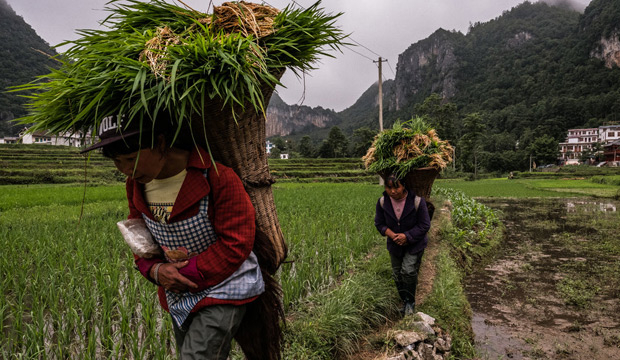Thanks to PSPA member Dr. Mark Haskins for this great reading suggestion.
WASHINGTON — When scientists want to figure out how climate change might disrupt the world’s food supplies, they often explore how rising temperatures could shift growing seasons or how more frequent droughts could damage harvests.
In recent years, though, researchers have begun to realize that the extra carbon dioxide that humanity is pumping into the atmosphere isn’t just warming the planet, it’s also making some of our most important crops less nutritious by changing their chemical makeup and diluting vitamins and minerals.
Now, a new study has found that rice exposed to elevated levels of carbon dioxide contains lower amounts of several important nutrients.
The potential health consequences are large, given that there are already billions of people around the world who don’t get enough protein, vitamins or other nutrients in their daily diet.
“When we study food security, we’ve often focused on how climate change might affect the production of crops,” said Lewis H. Ziska, a plant physiologist at the United States Department of Agriculture and a co-author of the new study. “But the quality of those crops and their nutritional content can be just as important, and that hasn’t always gotten the close scrutiny it deserves.”
In the study, published Wednesday in Science Advances, Dr. Ziska and his colleagues exposed experimental rice fields in China and Japan to the same elevated levels of carbon dioxide that are expected to occur worldwide later this century as a result of fossil-fuel burning and other human activities.
Most of the 18 varieties of rice that were grown and harvested contained significantly less protein, iron and zinc than rice that is grown today. All of the rice varieties saw dramatic declines in vitamins B1, B2, B5 and B9, though they contained higher levels of vitamin E.
The researchers focused on rice because more than 2 billion people worldwide rely on it as a primary food source.
For people in wealthy countries who enjoy a diverse, healthy diet, it may not matter much if rice becomes less nutritious in the years ahead. “But in a country like Bangladesh, rice provides 70 percent of the calories and there aren’t a lot of other opportunities to get those nutrients,” said Kristie L. Ebi, a professor of public health at the University of Washington and a co-author of the study.
This newest paper builds on a major study published in Nature in 2014, finding that elevated levels of carbon dioxide reduced the amount of zinc and iron found in wheat, rice, field peas and soybeans. In both studies, researchers installed pipes that emitted carbon dioxide onto small open-air plots — rather than simply testing crops in enclosed greenhouses — to simulate future real-world conditions.
The finding that extra carbon dioxide can make crops less nutritious may sound counterintuitive. Plants, after all, rely on carbon dioxide as an ingredient for photosynthesis, so it seems like more CO2 should be beneficial, helping them grow. But what scientists have also found is that the chemical composition of a plant depends on the balance of the carbon dioxide it takes in from the air and the nutrients it absorbs from the soil. Upset this balance, and the plant can change in unexpected ways.
In plants like rice and wheat that undergo what is known as C3 photosynthesis, higher levels of carbon dioxide may spur plants to produce more carbohydrates, which dilute some of the more nutritious components. But scientists are still trying to understand exactly why some compounds, like vitamin B, get diluted and others don’t, or why some varieties of rice see sharper declines in vitamin B than others.
With further research, scientists might try to breed or genetically engineer new crop varieties that preserve much of their nutritional value in the face of rising carbon dioxide. But this could prove challenging, Dr. Ziska said, given that all of the tested rice lines in their study showed significant declines in vitamin B.
“We still don’t understand why some plant genotypes show a bigger response to higher levels of carbon dioxide,” said Andrew Leakey, a crop biologist at the University of Illinois who was not involved in the latest study. “And that’s important if we want to move from understanding the problem to solving it.”
May 23, 2018, Brad Plumer. NY Times

